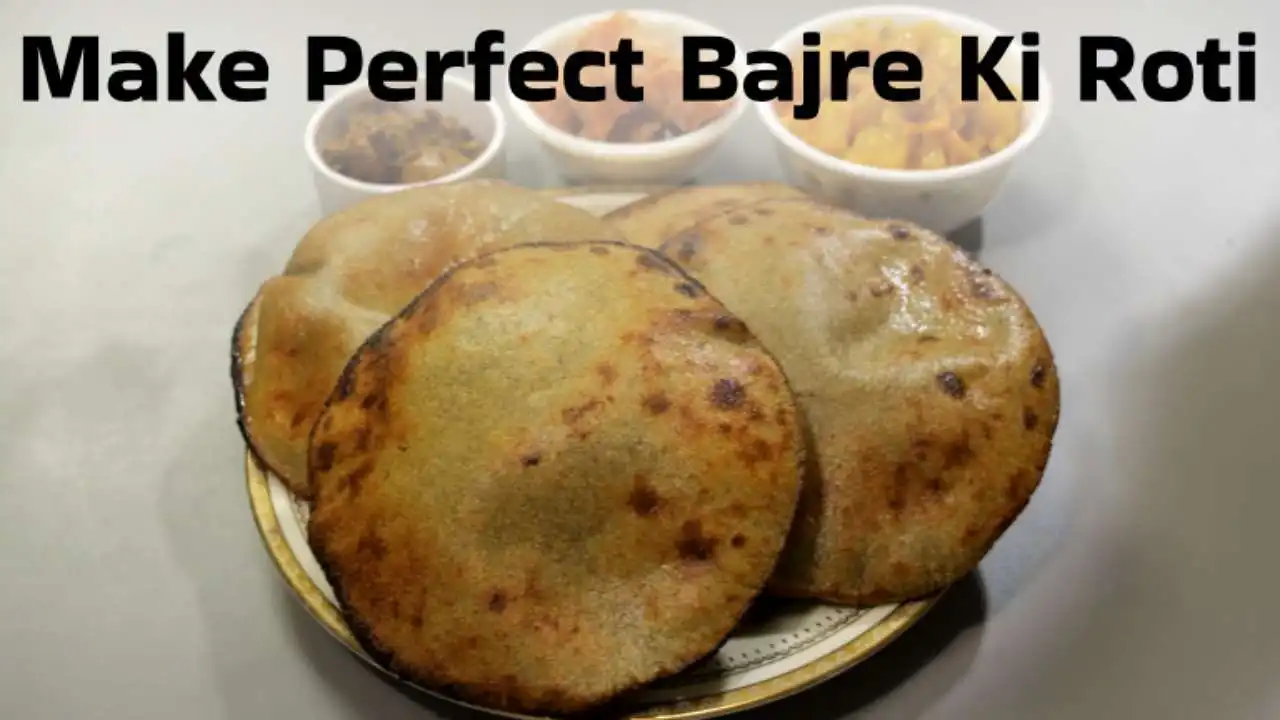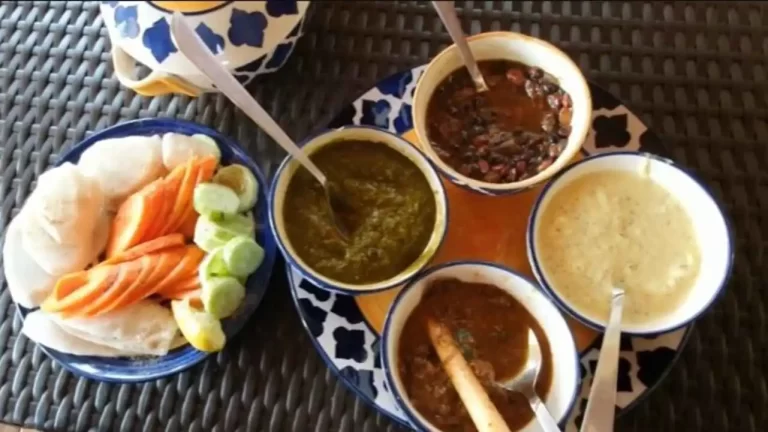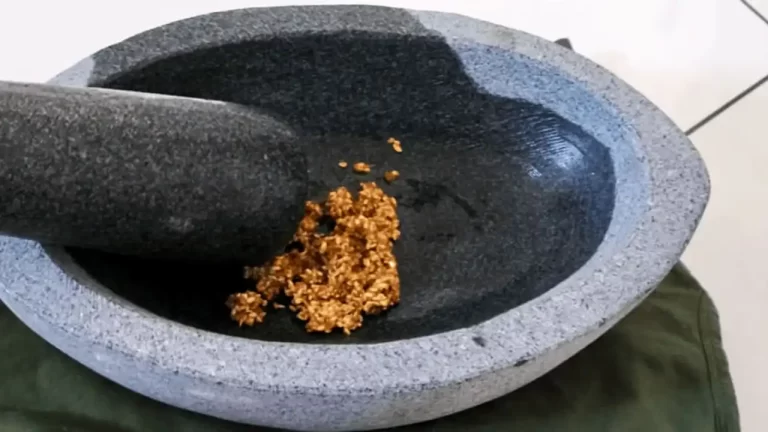How to Make Perfect Bajre Ki Roti: A Recipe from Rural India

Bajre ki roti recipe in english provides you with a hearty taste of real Rajasthani food meant to comfort you in the winter. This delicious flatbread which is made from millet flour, gives you all the nutrients you need without gluten.
What is bajre ki roti called? Makes bread or Bengali, is a classic Indian flatbread better known in Rajasthan, where it is usually enjoyed with Marwari Kadhi and pieces of jaggery as a complete meal. Since bajra is often found at local stores, making bajre ki roti at home is easy for anybody. Winter often means cold, so have some of this nourishing flatbread—it’s both warming and nutritious, with millet included every day in its main ingredients.
Table of Contents
What is Bajre Ki Roti and Why It’s Special
Starting from the dry lands of India, bajre ki roti is valued in the cooking of rural homes. Because bajra flatbread is made by using pearl millet, it represents not only food, but also many years of wisdom and ingenious cooking.
Traditional roots in rural India
For centuries, Rajasthan, Gujarat and sections of Maharashtra relied on bajra as their main crop because of droughts. While wheat needs water, bajra can survive in harsh conditions with minimal moisture which is why it’s found here. Rural communities first learned to use this hardy grain to bake flatbread that could help people after a long day at work.
Traditionally, women in these areas sit on the floor, use wood to make rounds (chakla) and make these breads by pressing the dough with their hands. Even though this discipline might seem simple, it takes years of experience to be successful. Also, the process of slow cooking food involves clay or grilled iron, both heated by burning cow dung cakes or wood which capture a unique smoke flavor that is now rare.
Why it’s perfect for winter
According to classic Ayurvedic teachings, eating bajra can warm you up, exactly what your body needs in winter. Since bajre ki roti heats your body, it is frequently eaten in northern India during the winter when the weather is coldest.
Rural people have, for a long time, made bajra part of winter meals and switched to jowar in summer, since it helps them adapt to the different temperatures. The strong texture of these flatbreads supplies energy that supports the body’s temperature in the colder months.
Health benefits of bajra flour
Bajra flour has a lot of beneficial properties for your health. In fact, this grain that people have been growing for millennia contains:
- The high protein found in wheat helps muscles and makes you feel full after eating.
- Vegetarian diets are usually short of iron and zinc, so you should eat them in abundance.
- A good source of magnesium that supports heart function and helps control blood pressure.
- Being filled with fiber, whole grains boost digestion and release energy continually.
If you have diabetes, these rotis can be a good choice thanks to bajra’s low glycemic index. Since bajra does not have gluten, it is a great way for people with celiac disease or gluten intolerance to eat flour.
Tried-and-tested beliefs about using bajra are much the same as modern guidelines. Because wheat is alkaline and warming, it helps stabilize body pH and supports proper metabolism—long-known advantages proved by modern research.
Ingredients You’ll Need
Because there are just a few main ingredients in this basic recipe, authentic bajre ki roti is surprisingly nutritious. First, let’s find out what you should gather in order to prepare this traditional recipe.
Bajra flour (millet flour)
Between the other simple ingredients, bajra flour helps you make the softest roti possible. Shop for flour that is grayish-blue and smells lightly sweet. Grinding your own bajra flour at home is best or, if you don’t have a grinder, buy from stores with fast-rotating stock.
For this recipe, you’ll need approximately:
- 1 cup (about 120-130 grams) of bajra flour for 4 medium-sized rotis
- Extra flour for dusting while rolling
The quality of the flour used makes a big difference to your bajre ki roti’s taste and texture. For the most part, flour from organically grown pearl millet is tastier and healthier than processed flour.

Water and salt
The perfect result of soft dough comes from following the guidance of water on the recipe:
- Warm water (approximately ½ cup or 120ml) makes the dough more manageable
- ½ teaspoon salt enhances flavor and helps bind the dough
Make sure the water is added little by little as you knead the dough to the point where it’s solid but also easy to work with. Gluten is missing in bajra flour to produce the dough, so you must be sure to hydrate it until it’s soft and pliable.
Optional: ghee for serving
While the dough skips ghee, it is essential for this dish by giving bajre ki roti all sorts of goodness:
- 1-2 teaspoons of ghee per roti, applied immediately after cooking
- Traditionally made from cow’s milk for authentic flavor
Importantly, using ghee gives the naan a nice, rich flavor, prevents it from becoming dry and keeps the roti tasting soft. Similarly, the ghee improves the body’s absorption of the fat-soluble nutrients available in bajra.
The distinctive flavor of bajra is often enhanced in rural India by home-churned ghee, made from cultured butter.
Step-by-Step Recipe: How to Make Bajre Ki Roti
Making perfect bajre ki roti needs you to be patient and to use the right methods. Try out this simple recipe for bajre ki roti which introduces rural India’s tasty tradition right into your home.
1. Preparing the dough
The correct form of the dough determines how your bajre ki roti turns out. Put 2 cups of bajra flour and a tiny pinch of salt in a mixing bowl. After that, pour in hot water (below boiling) and stir it in with a spoon first. Gluten-free bajra flour gets easier to knead when you use hot water.
Knead the dough for 8-10 minutes after it has cooled unless previously told by the recipe, until it feels soft and smooth. The nicely shaped dough should neither stick too much nor be very dry. Don’t forget to cover your bowl and let the mixture sit for just 5-10 minutes.
2. Rolling the roti using a plastic sheet
Separate the dough into equal-size balls, each ball should measure about 2 inches across. After getting each ball, quickly knead it to confirm there are not any cracks:
Since bajra lacks gluten, rolling requires a special technique:
- Place a dough ball between two plastic sheets or inside a ziplock bag
- Gently press and flatten using your palms or a rolling pin
- Aim for a 6-inch diameter with even thickness throughout
Because of this plastic sheet, the bajra won’t get wet and sticky like dough, so tearing isn’t a problem.
3. Cooking on tava and open flame
Hold a tawa on the cooktop over medium heat. Gently slide the roti which is on the rolling pin, onto the heated surface. As soon as the first small bubbles come out, turn the quesadilla over.
As soon as you flip the dough, add a small amount of water and spread it so your roti doesn’t dry out. Heat the patties on each side until they turn evenly brown. After, set the roti over a fire for a moment and turn it with tongs to make small charred marks.
4. Tips to avoid breaking the roti
Always work the dough with hot water to increase how flexible and stretchy it is. Blend the dough well until it feels smooth throughout and then break it into equal parts. At first, press the dough down gently and use little pressure while rolling it.
Remember that, unlike wheat rotis, bajra rotis don’t become puffy after cooking—this is perfectly regular. Spread ghee over the food right after cooking to keep it from becoming hard.
Serving Suggestions and Pairings
The full fun of eating bajre ki roti continues once it is cooked and before you serve it for your friends or family. In the past, millet rotis were enjoyed with selected accompaniments which made both them more delicious and healthy.
Best eaten with kadhi and jaggery
The old tradition of eating bajre ki roti is still with kadhi and jaggery (gud) which communities in rural India have treasured for years. The combination brings out the natural earthy taste in millet. Having a dollop of white butter (safed makhan) makes this special dish especially appealing during the winter season. Besides tasting good, this meal helps keep you warm naturally.
Most families consume lashun ki chaat and raw onions to finish their dal meal. Thanks to the kadhi, jaggery and garlic, you get a blend of distinct flavors on the tasty bajra base.
Other sabzi options to try
Portions of bajre ki roti taste great when served with almost any common vegetable preparation:
- Rich curries: Stuffed eggplant, aubergines in peanut-coconut-sesame sauce or stuffed okra come together beautifully.
- Leafy options: Palak Besan Sabzi, Soya Saag Aloo or Palak Tamatar are all nutritious meals to go with.
- Lentil dishes: Some good vegetarian protein sources are Panchmel Dal, Moong Dal and Radish Greens and Moringa Masoor Dal.
Combining these rotois with any vegetable curry helps people with diabetes maintain their sugar levels.
How to store and reheat
Stored correctly, bajre ki roti keeps its characteristics for only a short time. Cover the cooked rotis tightly and put them into the refrigerator for up to two days. Yet, when you read recipes from traditional experts, they often say that refrigerating Persian rice can alter the texture.
Put some water on both sides of the roti and warm it on a tava until it softens up again. If microwaving, use a wet paper towel to cover the food and set for 10 to 20 seconds. Using aluminum foil brings back the texture and protects the roti from becoming firm or hard.
Outcome
In rural India, bajre ke roti is a sign of original cuisine, as they are more than typical flatbreads. This meal is worth recognition because it brings together nutritional values and the culture of the people. In the cooler season, bajra does double duty—making you feel warm inside, plus giving you the protein, iron and magnesium your body craves.
Even though it looks tough to master, anyone can make perfect bajre ki roti. Even so, practicing the techniques below—making the dough and rolling it out with a sheet—will allow you to succeed at this art form over time. Be aware that, because it is gluten-free, bajra should be handled differently from wheat-based bread.
Your culinary journey is finished when you enjoy these rotis together with classic sides. Kadhi and jaggery have traditionally been paired with bajra, but the same earthy taste works well with many types of vegetables, too. Knowing how to keep and reheat these flatbreads means they can be used as leftovers.
Try adding buckwheat to your meals before you start using modern dining options. This is because generations of village communities have depended on bajra’s great taste and its strength under extreme weather. The dawn of gift-giving food now brings their age-old wisdom to your plate in this recipe. You can enjoy bajre ki roti to experience how Indian food is so diverse and you’ll love how healthy it is too.
FAQs
Q1. What are the health benefits of eating bajre ki roti?
Ans: Bajre ki roti supplies a good amount of protein, iron and magnesium. It helps keep your heart healthy, keeps your blood sugar stable and provides energy that lasts. Its stimulating nature means it’s perfect for enjoying in cold weather.
Q2. Can everyone eat bajre ki roti?
Ans: Even though bajre ki roti is nutritious, it is not right for all people. Those with thyroid-related conditions shouldn’t eat soy because it can get in the way of their iodine uptake. If you have any concerns about digestive health or your kidneys, caution is needed.
Q3. How do you make perfect bajre ki roti?
Ans: To help the dough mould well, use hot water when making perfect bajre ki roti. Use plastic sheets to cover the roti as you roll it, so it doesn’t stick. Cook on very hot griddle, followed by a short time over the open flame to get the charred look.
Q4. What’s the best way to serve bajre ki roti?
Ans: Most of the time, bajre ki roti is eaten with kadhi and jaggery. It goes nicely with different vegetable curries, lentil creations and garlic chutney. Putting a bit of ghee on hot roti makes it nicer and softer.
If you need any help, please contact us here and visit daily for beneficial health updates.




One Comment